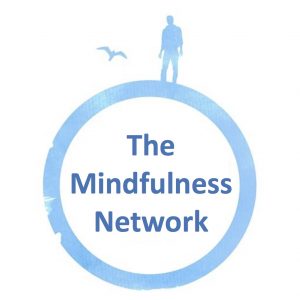
This blog post, written by Rosalie Dores, was originally shared on her website, Optimal Living, and can be read in full here. Rosalie is a mindfulness teacher, trainer and supervisor, and will be leading a Mindful Movement workshop in May 2025.
It is my experience as a mindfulness practitioner, teacher and supervisor that movement practice is an essential pre-requisite to my being able to connect with others. In moving, I am heightening my feeling and sensing capacities. I am learning the non-verbal language of the body. This translates into my relationships with others, my participants and supervisees, I am able to notice my bodily responses to other people with more clarity. I am more sensitive, empathic, able to pick up subtle cues from others. The Oxford dictionary defines empathy as ‘the capacity to understand and feel with another.’ It is obvious, but necessary to state, we feel with our bodies. Movement practice then, is vital, both in terms of bodily health and well-being, but also in terms of our quality of connection; within our environment,and relationships with other people. Why then do so many of us avoid it?
I recently had the privilege of training mindfulness teachers to guide movement practices. It is always a joy for me to teach mindfulness, and to train teachers. I love the participatory learning model that underpins mindfulness based approaches. Rather than a ‘banking model’, where students are perceived as repositories for the teachers knowledge, participatory learning invites the intelligence of the students to drive the learning. It is vibrant, engaged, respectful of, and empowering for, participants. I also love teaching movement.
Mindful movement has been a central part of my own practice since 1992. I taught Mindful Yoga in London for ten years and have explored other movement practices; Feldenkrais (Awareness Through Movement) and the Sensory Awareness practice of Charlotte Selver. I love to ‘get into’ my body, to attend to, and uncoil, the knots and tensions that develop throughout the course of a day. Movement practice leaves me feeling longer, looser and more flexible, as well as sensitive, attuned, energised and in touch with the intelligence of my body.
Back to the teacher training. We began with a group exploration. I wanted to get a sense of where the teacher trainees were in relation to their movement practice, personally and professionally, and so asked them to share. Unsurprisingly, seven of the eight trainee teachers did not have a movement practice and all were nervous about offering movement to others. I experience this again and again, that many people, live as Joyce’s Mr Duffy, in disconnection from their bodies. But why?
The trainee group and I explored this together. People described feelings of aversion to their bodies, as cumbersome, stiff, inflexible, inadequate and disappointing. They explained that their bodies did not meet their expectations in terms of appearance or performance. They expressed fear of a body that could betray them by erupting in pain, deflating in fatigue, illness, lethargy, decaying in age and abandoning in death. The body can be an uncertain, uncontrollable and scary. Where do all these bodily experiences arise from? We know rationally that we have vital organs, but we can’t see them. We don’t know what condition our internal body is in. We don’t know how it will feel from day-to-day. We can’t see ourselves without a mirror!
Our movement practice however can be a mirror. A mirror that reflects not through sight, but through feeling and sensing. Awareness of contact, weight, sensation, ground and space. By engaging in movement we can get to know our bodies not only from the outside in, but more importantly from the inside out. A tight, inflexible, tense and contracted body is less capable of well-being, let alone attunement or sensitivity. We take heart, we embody courage, and we move towards, and meet, the tight places. When we move towards those tender places in our bodily experience, we learn a transferable skill for moving towards those tender places in our emotional and psychological experience. Our movement practice, is as essential as our sitting practice for cultivating our capacity for presence, for the self-understanding necessary to reduce our stress and unhappiness.
As well as describing aversion and fear with regard to bodily experience, my teacher trainees spoke of experiencing joy, delight, energy, invigoration, sensation, sensuality, intelligence and at times rapturous experience. I could see this embodied as I watched them rolling playfully in movement exploration. It was beautiful!
Taking up a movement practice, that invites one to engage with, listen to, and with the body is central to living mindfully. This can be different things to different people. I love Yoga and swimming, for others it might be Tai Chi, walking, running or playing sports. I would recommend a practice that allows you to slow down, so that you can listen to, and attune to your bodily intelligence.
And then, there is the everyday, the tongue tasting, the belly delighting, the hands and skin touching, the head inclining to smell, the ears stimulated by sounds, and the head turning and lifting to look at sights. The world is continuously inviting us to come home.
‘My body.
You are so kind to wait for me while I am away.
I wander off, but you don’t budge.
When I come to my true home.
It is you.’
Workshop: Mindful Movement – Leading from Within
When: 10 May 2025
Where: Online Event
Tutor: Rosalie Dores
Apply Here





